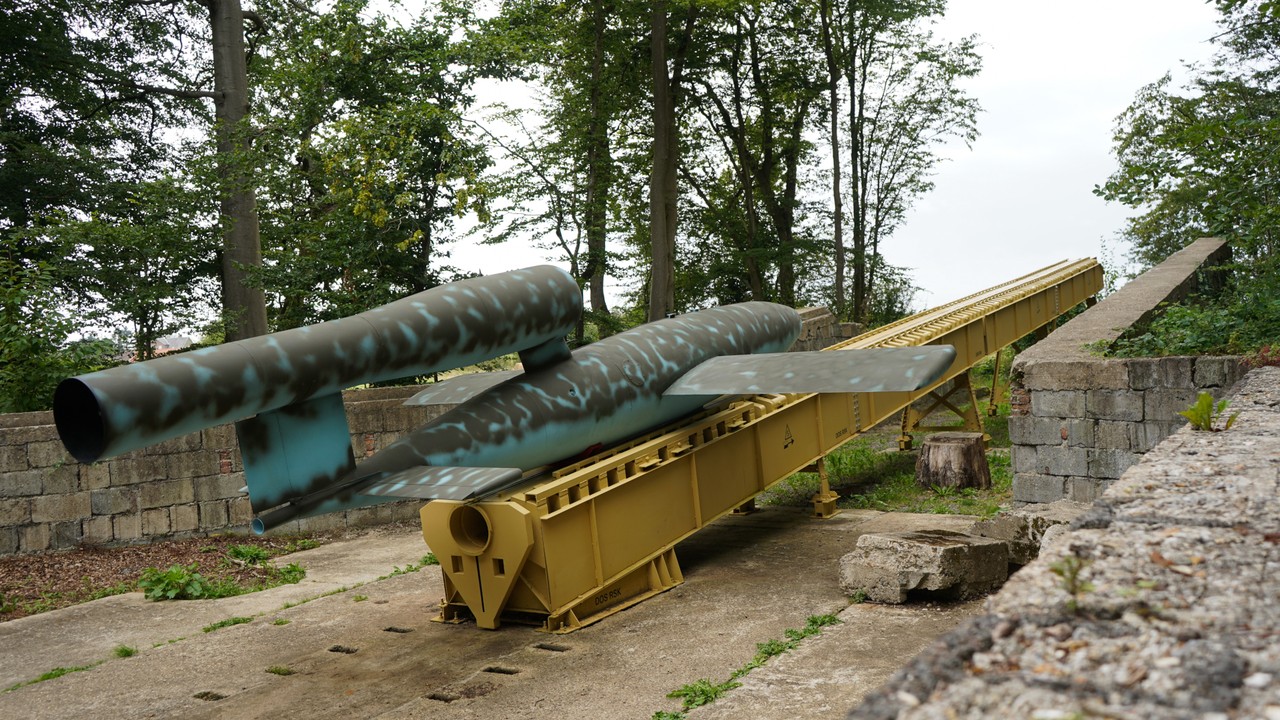The Beaulieu site stands opposite the farm of the same name, in the commune of Campneuseville, on the edge of the Haute-Forêt d'Eu. This base is a so-called ‘first type’ site, also sometimes referred to as a ‘heavy site’. These types of site came into being in mid-1943, with the first works starting in the summer. Each base comprises a dozen concrete structures, necessary for the various stages in the preparation of the flying bomb.
These structures are linked to each other by a network of concrete tracks. Massive and easily recognisable because of their characteristic appearance, the ‘heavy’ bases were placed in areas where camouflage was possible, often in the woods, as in the case of Beaulieu, and sometimes in the courtyards of castles or farms. These precautions were not enough, however, and the ‘heavy’ sites were almost systematically neutralised by the allied air force even before they came into service.
This was the case at the Beaulieu base: following a bombing raid, several structures were hit, including the non-magnetic building, which was essential in the process of firing a V1. No flying bombs were able to leave Beaulieu. Despite all this, the remains are remarkably well preserved, and reveal an impressive state of finish. The use of bricks to which joints have been added testifies to this attention to detail. Several buildings are still standing.
The location of the ramp is still visible thanks to the two imposing protective walls made of concrete and breeze blocks, which widen out from the anchorage to form a funnel-shaped corridor.
A ‘heavy’ launch site is made up of a dozen concrete buildings. They are used to launch the V1, store the flying bombs and accommodate the personnel deployed to the base. The layout varies according to the location of the site, in order to blend in as well as possible with the existing landscape.
